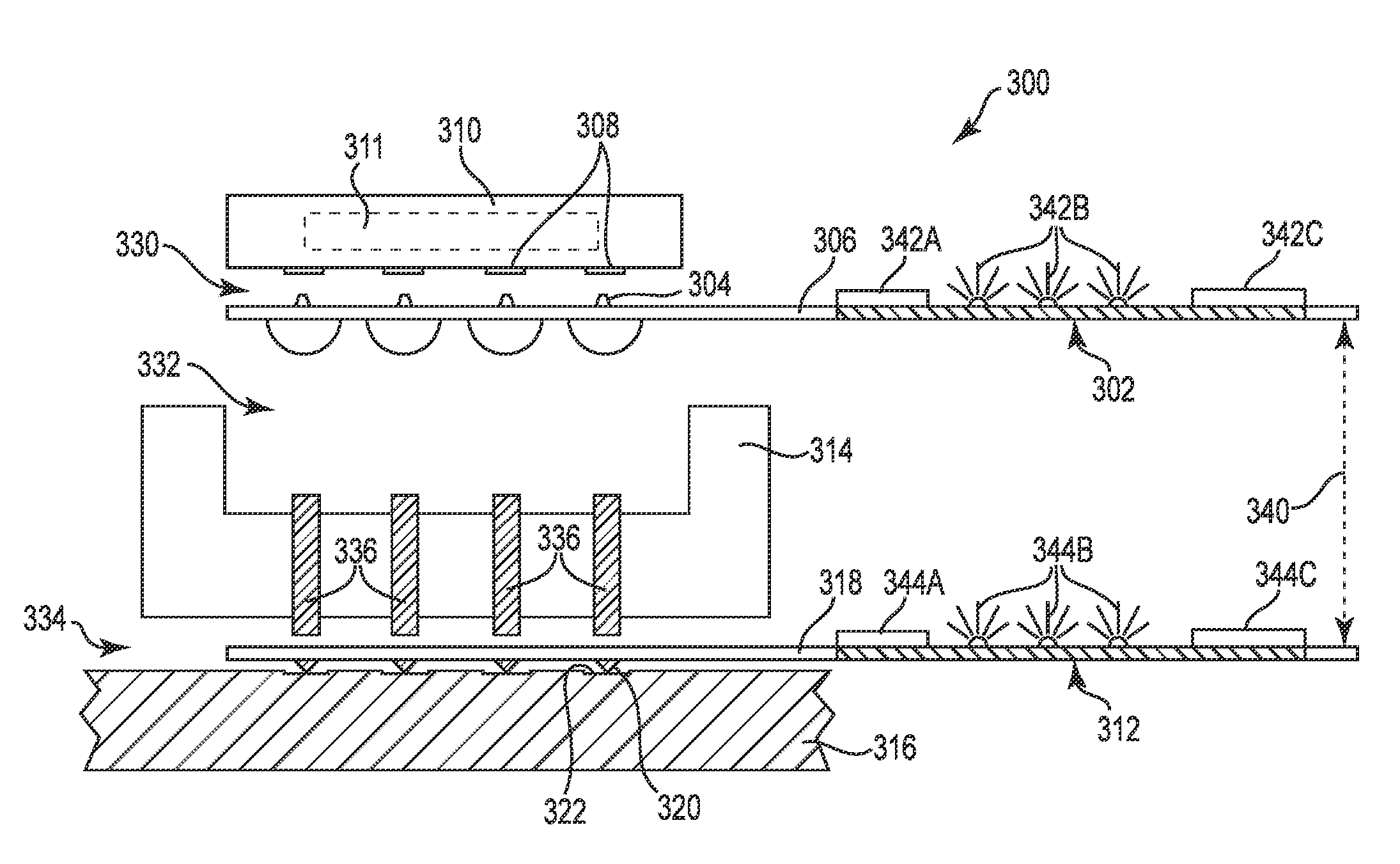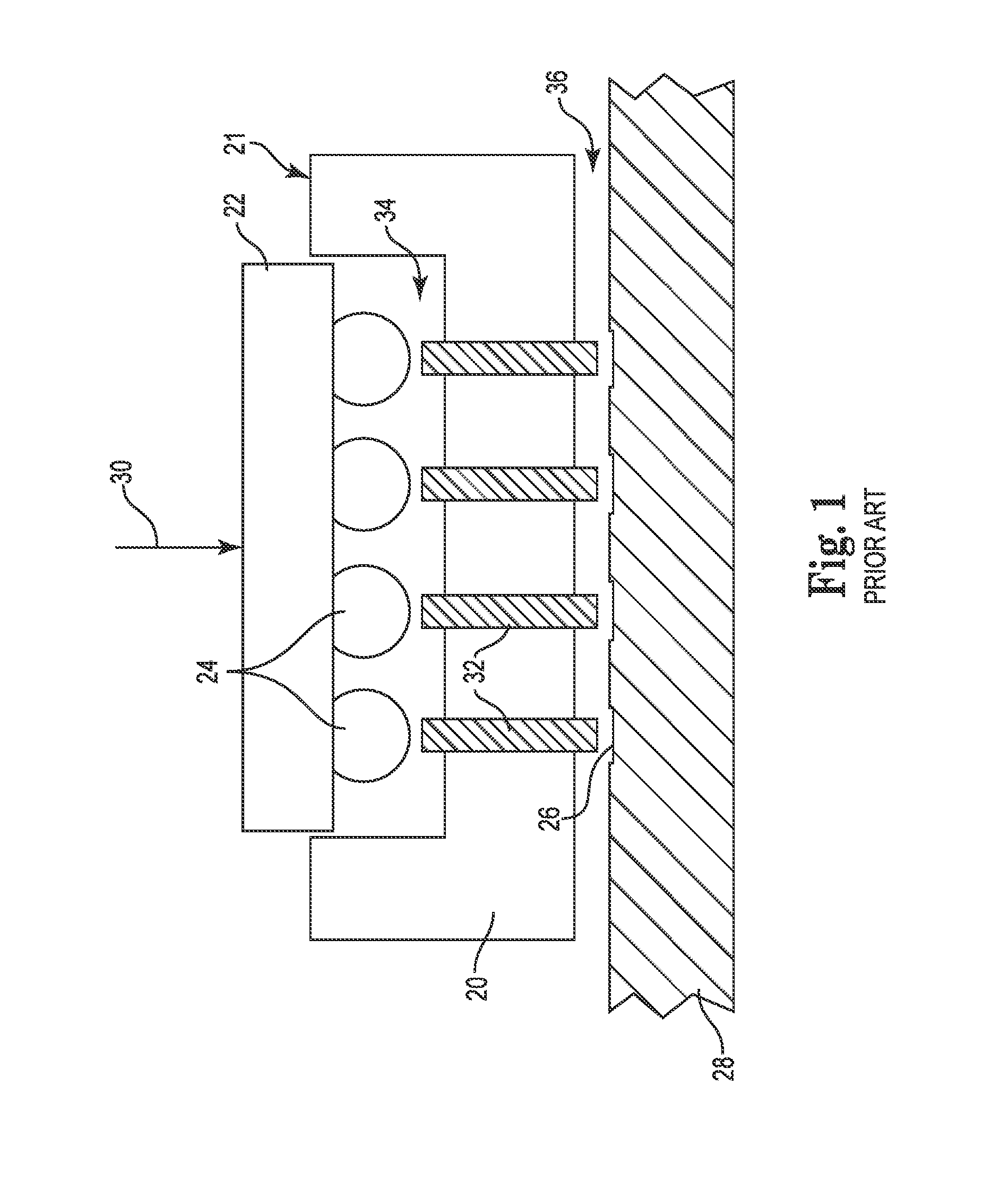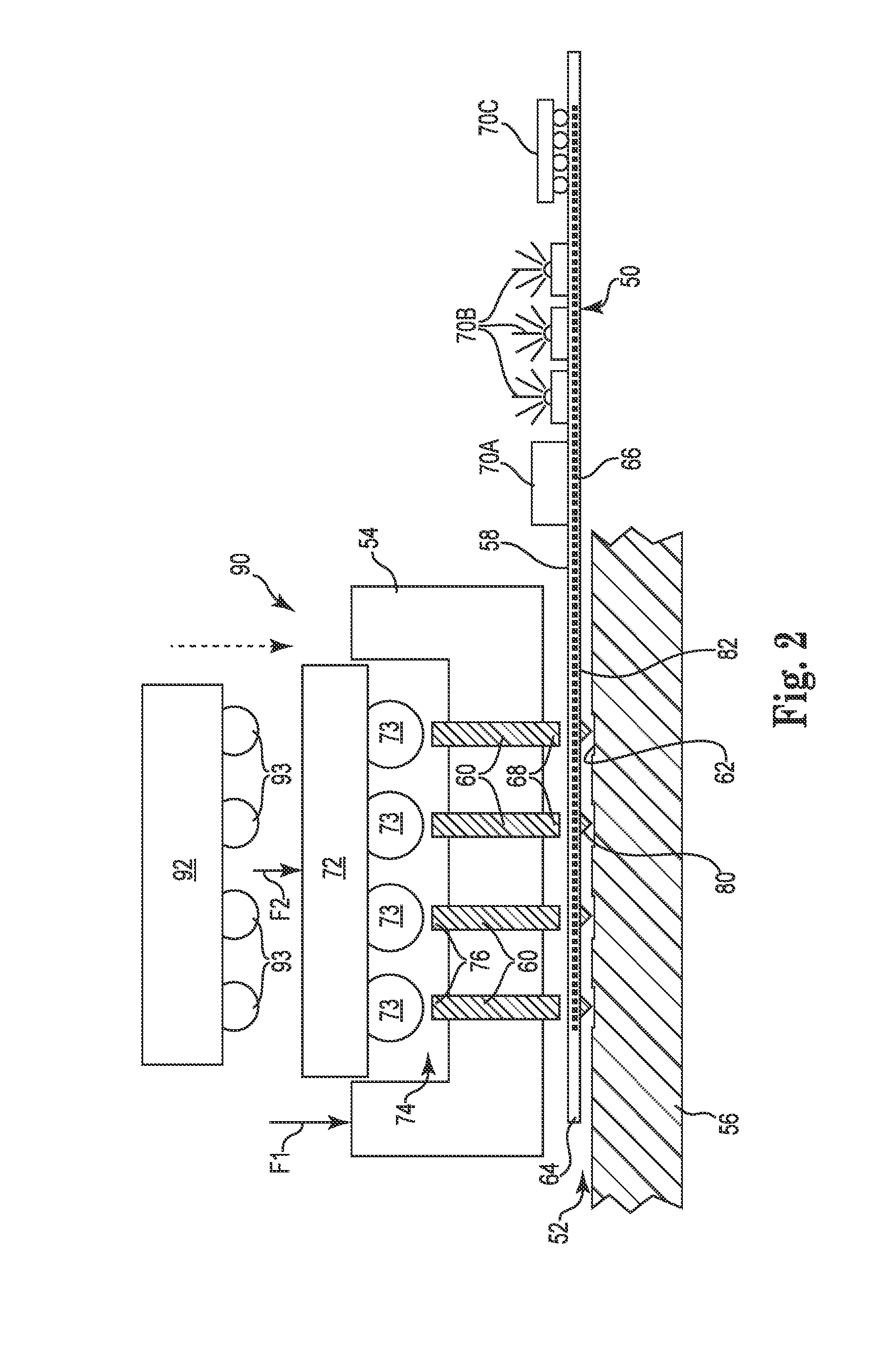Compliant printed circuit socket diagnostic tool
a diagnostic tool and printed circuit technology, applied in continuity testing, instruments, measurement devices, etc., can solve the problems of taking weeks to generate a revision, traditional methods, etc., and achieve the effects of simple low-cost, high-performance interconnection, and increased value for users
- Summary
- Abstract
- Description
- Claims
- Application Information
AI Technical Summary
Benefits of technology
Problems solved by technology
Method used
Image
Examples
Embodiment Construction
[0033]FIG. 2 is a schematic illustration of a diagnostic tool 50 electrically coupled at an interface 52 of a socket 54 and a printed circuit board (PCB) 56 in accordance with an embodiment of the present disclosure. A compliant printed circuit 58 of the diagnostic tool 50 is positioned to act as an electrical interconnect between contact members 60 on the socket 54 and contact pads 62 on the PCB 56.
[0034]The present compliant printed circuit 58 can operate with fine contact-to-contact spacing (pitch) on the order of less than 1.0 millimeter, and more preferably a pitch of less than about 0.7 millimeter, and most preferably a pitch of less than about 0.4 millimeter. The socket 54 permits IC packages 72, 92 to be installed and uninstalled without the need to reflow solder.
[0035]The compliant printed circuit 58 is a flexible polymeric sheet 64 with a plurality of conductive traces 66 arranged in an array to electrically couple with proximal ends 68 of the contact members 60 and contac...
PUM
| Property | Measurement | Unit |
|---|---|---|
| lead-time | aaaaa | aaaaa |
| aspect ratio | aaaaa | aaaaa |
| width | aaaaa | aaaaa |
Abstract
Description
Claims
Application Information
 Login to View More
Login to View More - R&D
- Intellectual Property
- Life Sciences
- Materials
- Tech Scout
- Unparalleled Data Quality
- Higher Quality Content
- 60% Fewer Hallucinations
Browse by: Latest US Patents, China's latest patents, Technical Efficacy Thesaurus, Application Domain, Technology Topic, Popular Technical Reports.
© 2025 PatSnap. All rights reserved.Legal|Privacy policy|Modern Slavery Act Transparency Statement|Sitemap|About US| Contact US: help@patsnap.com



